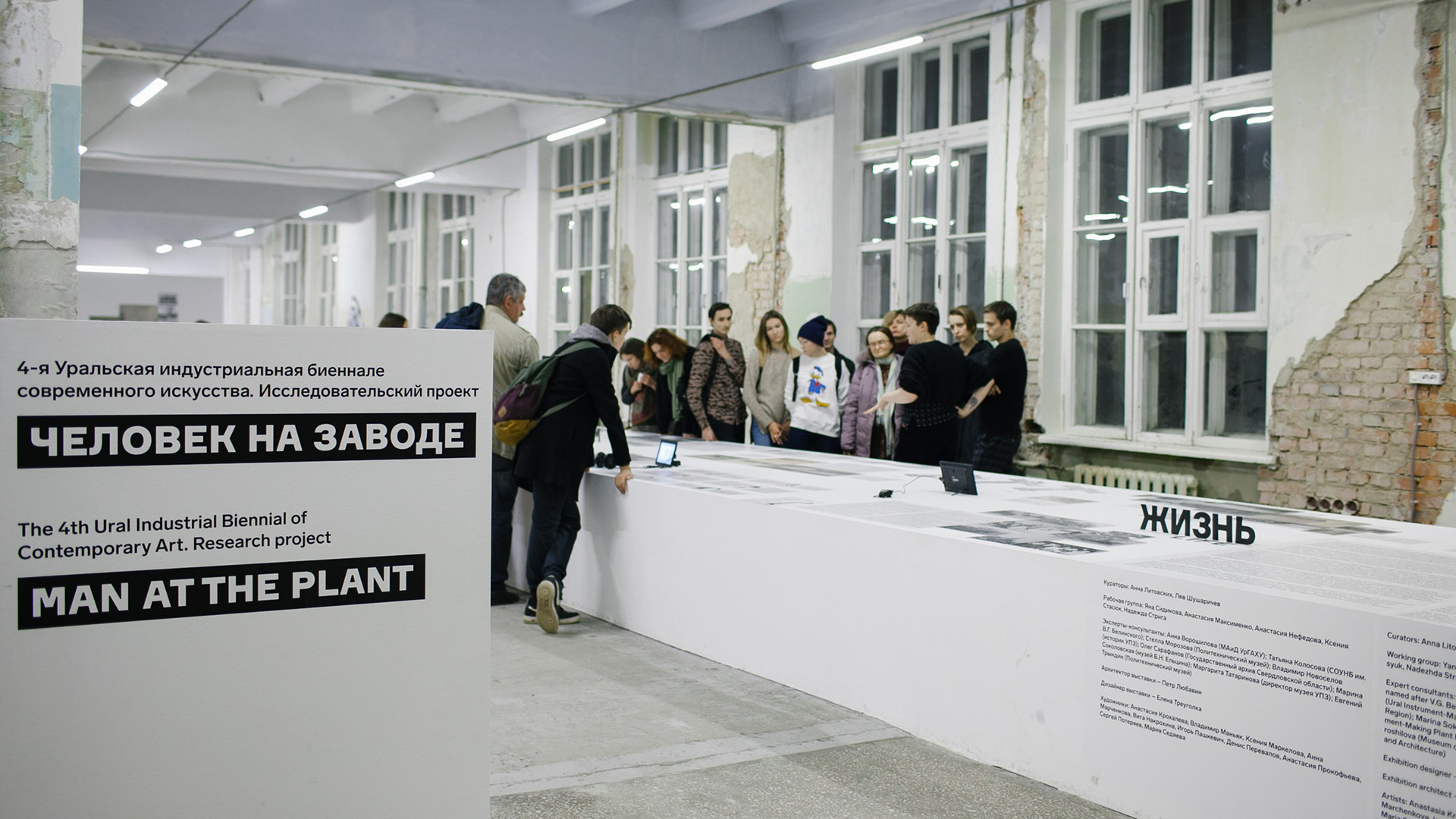Ural Industrial Biennial of Contemporary Art
The Ural Industrial Biennial of Contemporary Art finds itself at the crossroads of divergent cultural, economic and political trends. It works as a strategic intervention in the process of Ekaterinburg’s transformation from the industrial capital of the USSR to a post-industrial city, the process which, unlike in many other cities in the world, is not terminal. Significant part of the city economy remains linked with industrial production, so the tensions between different urban and social spaces are constantly reproduced, opening the interpretative gaps that the biennial aims to explore.
Every Biennial leaves a trail of visible changes – newly dedicated professionals, a reply to the inner interests of the audience and a desire to say something “back”. The Biennial must be a project that doesn’t take place and disappears once in two years if we want it to be effective, but a practice that is permanently present in the city’s life. In this way, the logic of the Ural Industrial Biennial has an immediate impact on the policies of our institution – the Branch of the National Center for Contemporary Arts in Ekaterinburg.
In 2010, the 1st Ural Industrial Biennial of Contemporary Art took over factory spaces in and around Ekaterinburg to take on the problems of material and symbolic production, industrial and artistic labor, the industrial and the post-industrial in the context of the city of Ekaterinburg and the Ural region.
The 2nd Ural Industrial Biennial of Contemporary Art develops the key concepts of set by the first, with a focus on the possibilities of going beyond the binary of production vs. consumption in artistic, cultural, and social spheres. The biennale explored the potential of contemporary art as a means to appropriate and reconfigure (non)exhibition spaces and local audiences. Roster of exhibitions took place in a variety of venues (including both operating and abandoned factories of the Ural region).
The 3rd Ural Industrial Biennial will take place in September-October 2015 and will refer to those questions: Can industrial spaces appropriated by the biennial resist art’s tendency to become the object of passive consumption? How can contemporary art change public spaces created in the industrial epoch? What happens to the spectator who finds himself in these spaces, at the point of intersection of different meanings and practices – industrial, post-industrial, commercial, artistic?
Organisational structure: Main project, special projects, parallel program, art residence program, intellectual platform
Main project: The commissioner of the Biennial invites the curator for the main project. The curator proposes the topics and selects the artists. The organizer (NCCA UB) implements the project management.
Special projects: The commissioner of the biennial introduces the direction of ideology, the organizers (NCCA UB) curate in the projects in the given intellectual framework.
Art residence programm: Authors are chosen for participation in the Art Residence Program via a two-round competitive selection process. The Jury of the first round is formed by the Biennial Organizers – the Ural Branch of the National Center for Contemporary Arts (UB NCCA). During the second round authors are selected by the Biennial’s Expert Council, consisting of members of the professional art community.
100% of selected and signed projects are realized in the framework of the biennial. For the 2nd Ural Industrial biennial 30 artists/art groups were invited for the main project, 13 artists for the site-specific special project and 3 special projects, 10 projects in art residence programm and four sessions within the intellectual platform.
The Ural Industrial Biennial was founded in 2010.
Founders: National Center of Contemporary Art (NCCA), Ministry of Culture of the Russian Federation
Co-Fouders: Administration of the Governor for Sverdlovsk Oblast, Government of Sverdlovsk Oblast, Administration of Ekaterinburg City
Photo Credits:
1,3-4. “by ZOOM ZOOM Family.”
2. Sergey Poteryaev, more information about the project: “Culture as an Enterprise,” (2017, 4th Ural Biennial)
Ural Industrial Biennial of Contemporary Art
- Authors: National Centre for Contemporary Art, Ural Branch, Alisa Prudnikova (commissioner)
- Location: Ekaterinburg, Russia
- Year: 2010, 2012, 2015, 2017, 2019
- Budget: 2010: 10 million rub; 2012: 27 million rub; 2015: approximately 50 million rub (to be confirmed)
- URL: https://www.uralbiennale.ru

